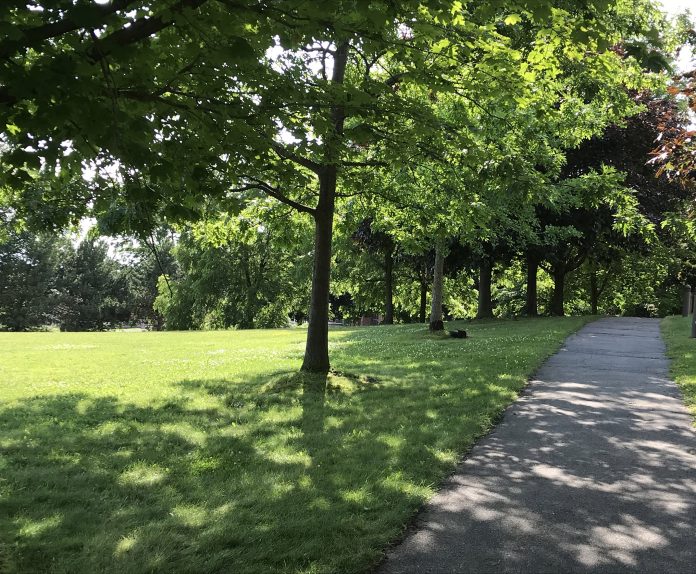If you own real estate, chances are you have a tree or two growing on it. Trees are like oxygen: it is easy to take them for granted until we need them, or they disappear.
Your investment in mature trees cannot be measured in dollars as the time that it takes to grow one is priceless.
Take care of the trees on your property now and enjoy their many benefits for years to come. Here is our primer for tree care:
Water. A mature maple tree will transpire over 400 litres of water on a hot summer day, moisture is drawn from its roots. Generally, a tree does not need water from us after it has been established for four or five years. However, when the heat hits home, be prepared to provide a deep watering for any tree that may be at risk by leaving a trickle of water from the end of a garden hose for hours at a time, maybe a full day. This slow delivery of water will seep into the root zone where it is most needed. Small amounts of water applied frequently encourage shallow, drought prone roots, therefore watering your lawn does not count. You are better off not to bother.
Bugs. What is bugging your tree? Chances are not the bugs. We give bugs a bad rap. Trees and native bugs have worked out a symbiotic relationship whereby the tree needs the bugs as much as the bugs need the tree. An oak is the perfect example of a tree that attracts a host of bugs, over 400 species in fact. Bugs attract nesting insectivore birds, which nest in tree limbs. Bugs attract bats, also beneficial to the environment and marvelous mosquito controllers. When bugs are truly a nuisance is when invasive species take hold and do real damage to trees. Here are a few to look out for:
Gypsy moth. Native to Europe. The hairy caterpillar hatches in abundance midsummer and nibbles away tree leaves, sometimes denuding a tree of leaves entirely. Control them with a band of several layers of burlap tied around the tree trunk. Remove the caterpillars daily and drop into a bucket of soapy water overnight.
Emerald Ash Borer. Native to Asia. About 10 years ago the EMB moved through Toronto and devastated eight percent of our tree canopy, every ash tree in its way. Replant using a tree species that is not ash, or Fraxinus.
Japanese Beetles. Another pest that denudes trees of leaves early in summer. The only answers are food and sex pheromone traps. Hang them out as soon as you see an infestation. Empty them often.
We remind you that a naturally occurring bug is part of nature’s web and best ignored until some predator eats it.
We live in a world that is made up of nature’s web. Your garden is an important part of that web.
Environmental damage. A dead limb here, fallen branch in a windstorm there. Obtain the use of tree loppers or a long-poled tree saw. The saw is different from a wood working saw as it cuts on both the fore and back stroke and is designed for optimum use on green wood.
If in doubt, call an arborist. There are lots of “tree butchers” out there who are happy to take a chainsaw to your tree for a fee, whereas an ISA certified arborist has gone to school for years to learn their trade. Arborists are doctors of trees, committed to the health, safety, and long life of trees. Look for certification when shopping for tree advice and be prepared to pay a few hundred dollars for a consultation.
If you have a tree that is close to the street, chances are it belongs to the city. If you have concerns about its health, call the city and alert them to your concern.
As we approach the hot, sunny days of summer it is important that we don’t take the many benefits provided by a healthy tree canopy for granted.
Mark Cullen is an expert gardener, author, broadcaster, tree advocate and Member of the Order of Canada. His son Ben is a fourth-generation urban gardener and graduate of University of Guelph and Dalhousie University in Halifax. Follow them at markcullen.com, @markcullengardening, and on Facebook.


